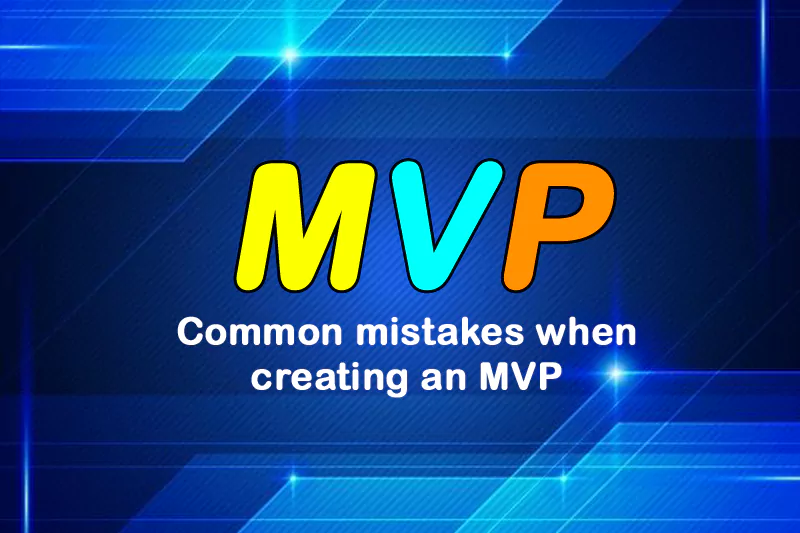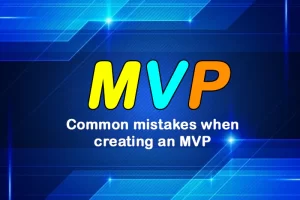
The natural stage of creating a startup is the creation of a working MVP – a Minimum Viable Product. There are many shortcuts, and everyone answers the question, “Is it worth it?” differently. Below are the most common mistakes people make when creating MVPs we encounter in the industry.
The idea of a Minimum Viable Product seems simple: create a basic version of your product, which will consist only of elements necessary for its proper functioning.
Nowadays, MVP development for startups is what every startup should consider. We have been providing services related to creating MVP since the beginning of SECL’s existence, so we know what project owners face most often; we also know how this can be easily avoided. Creating an MVP is a process full of pitfalls that you can prepare for – but first, you have to get to know them.
Lack of project documentation and valuation attempt
It is not uncommon for product owners creating their own MVPs to come to an agency with the very idea of an application or platform. Sometimes it is supported by a modest brief, sometimes not. On this basis, they expect a reliable valuation, which is obviously impossible – and even inadvisable. Agencies always try to bring the client to the right path and do a project analysis with him, based on which they will not only develop project documentation but, above all: they will be able to assess the time and costs realistically.
Creating an online platform without project documentation is like building a house without a project – we do not recommend it. Project documentation allows for precise determination of the project’s scope and becomes a sensible basis for valuation and a reference point during implementation – both for the contractor and the client. More importantly – such documentation allows you to find the best path for the implementation of functionality for future users.
Supposing that the MVP is the final version
The first product we want to show the world should be MVP. That’s right – the first, but certainly not the last. After MVP, more versions, functionalities, additions, and sometimes even pivots should be created – all based on user feedback.
Meanwhile, we often witness a situation in which the client treats MVP as the final version, which makes them perceive every minor change as a change in his original idea or (worse) bad advice when creating an MVP. There are several reasons for this situation: lack of financing, lack of specifications, the expectation of quick profits, or lack of understanding of how Internet projects are created and evolving. However, regardless of the reason, it should be remembered that the creation of MVP is just the beginning.
Increasingly, MVP is necessary as a Proof of Concept, and only a project in this version allows you to get financing. Fewer and fewer investors believe in any idea based on your words only; they expect a tangible product (along with a scalable business model).
Attempting to monetize quickly instead of scaling
Business is about money; that’s clear. On the other hand, the functioning of the startup resembles a marathon rather than a 100-meter race. That’s why agencies warn customers against trying to monetize their business quickly. On a small scale, it is extremely difficult and usually ends in failure – if the goal is a quick profit, then the product necessarily becomes a second track in the context of its best version for the user. It is much more important to find a sensible model, the continuous evolution of the product focused on building scale, and, more importantly, evidence that with proper funding, the model can still be scaled. It is such startups that investors are willing to finance much more willingly – and that’s the point.
No market research
Unfortunately, we repeatedly encounter underestimating the role of research in the process of building MVP. From such elementary as the study of product needs in the target group, which will answer the question of whether our potential users are interested in our product at all, through research on, for example, persons or determining who our target group really is, to more detailed UX tests and A / B tests when deciding on how to implement a single functionality.
There are usually two reasons: costs and predetermined assumptions. Research costs money; there is no doubt about it. Nevertheless, far more expensive is the product that no one wants except the creator himself.
A great example of this can be the HotJar mobile application – the company created the application without examining (assuming in advance) the need for such a one. The effect? Wasted $200,000, and eventually, a project that was killed. But there are also many successful startups; take a look at companies using Node js! Some of them started as startups and are really successful now.
Do you have an idea for a startup and do not know what to do next? Are you at the stage of looking for financing, or maybe you need to create an MVP? SECL experts will help you!





